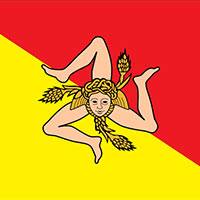The Norman Palace in Palermo (Palazzo Reale / Palazzo dei normanni) - a UNESCO World Heritage Site
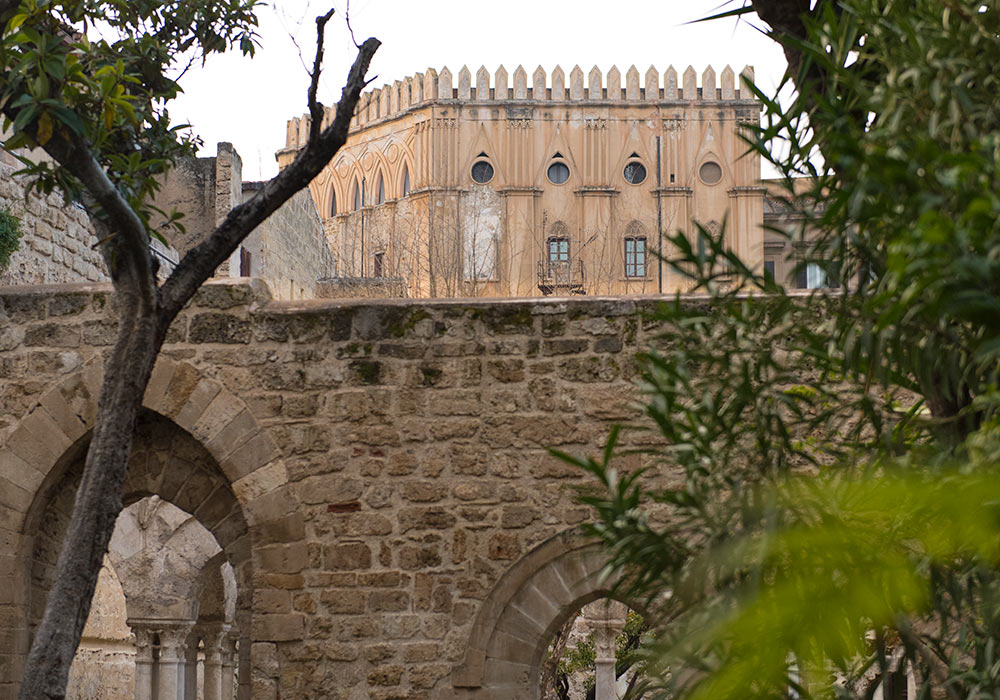
The Norman Palace seen from the garden of San Giovanni degli Eremiti.
The Norman Palace, also known as Palazzo Reale and Palazzo dei Normanni dates back to the early days of Palermo, and over the centuries, it has mirrored the city's fortunes, evolving under the rule of emirs, dukes, princes, kings, and viceroys who added to its structure as they pleased. Towers, treasuries, courtyards, chapels, and ballrooms were incorporated into its design at various times, reflecting the whims of its successive rulers. Recent research indicates that the palace was built upon and expanded from a Phoenician fortress. Since its inception, it has served as the seat of power for the rulers of Sicily, hosting the courts of Roger II and Frederick II, whose influence extended across Europe and the Mediterranean. The Spanish added the main façade to the palace. Since 1947, it has housed the Regional Assembly.
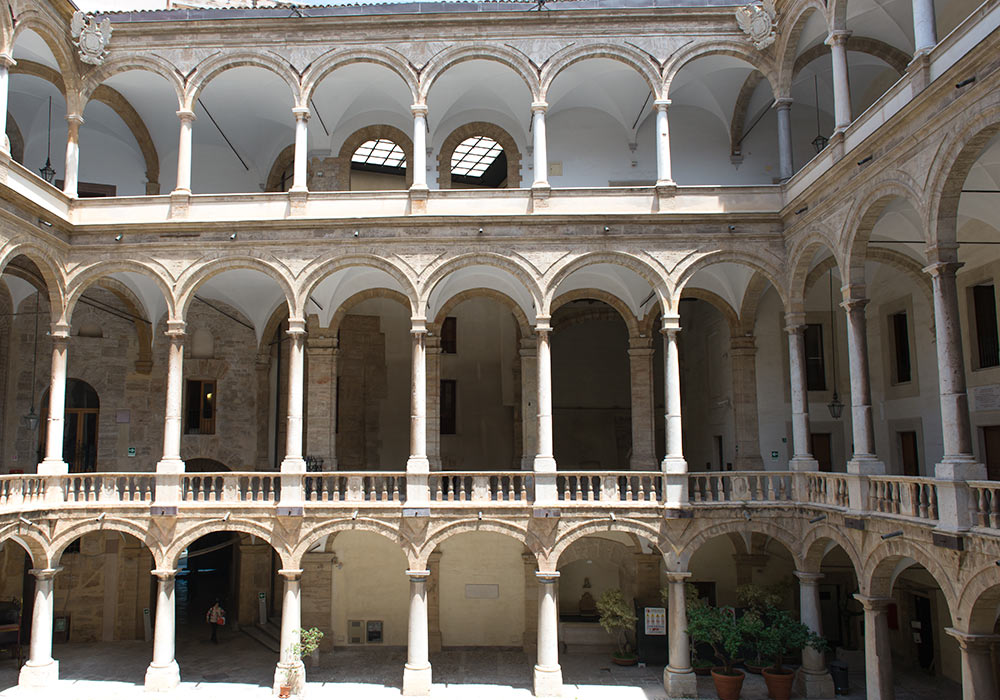
17th century courtyard with portico was comissioned by the Viceroy.
The Norman Palace with the Palatine Chapel is inscribed on UNESCO’s World Heritage List.
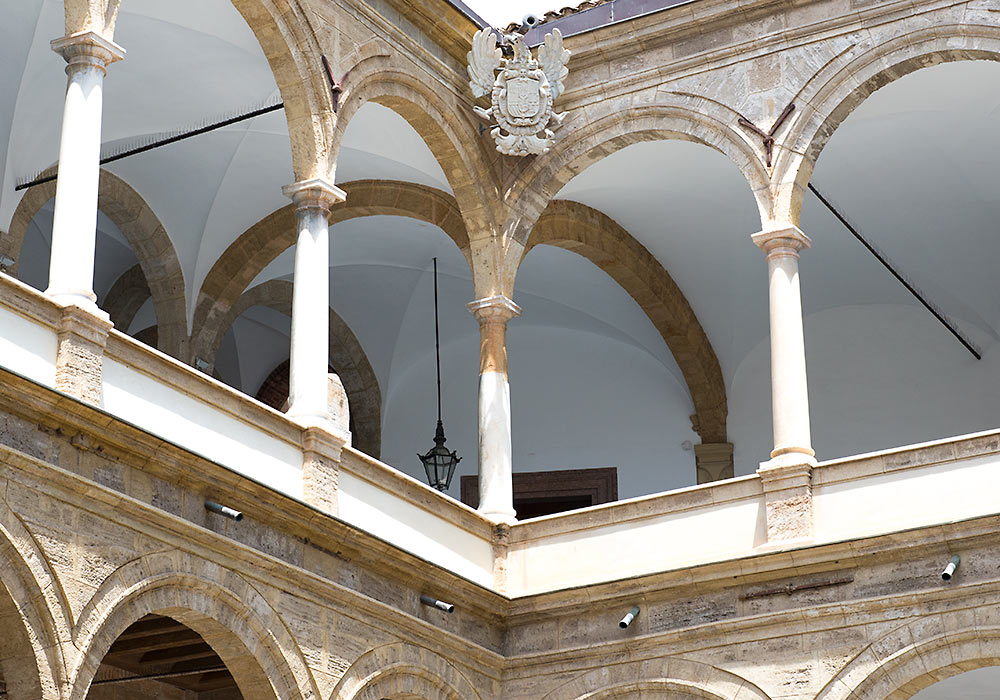
The 17th century courtyard at the Norman Palace.
UNESCO’s World Heritage List
Arab-Norman Palermo and the Cathedral Churches of Cefalú and Monreale (Italy) - new on the list (2015)
Located on the northern coast of Sicily, Arab-Norman Palermo includes a series of nine civil and religious structures dating from the era of the Norman kingdom of Sicily (1130-1194): two palaces, three churches, a cathedral, a bridge, as well as the cathedrals of Cefalú and Monreale. Collectively, they are an example of a social-cultural syncretism between Western, Islamic and Byzantine cultures on the island which gave rise to new concepts of space, structure and decoration. They also bear testimony to the fruitful coexistence of people of different origins and religions (Muslim, Byzantine, Latin, Jewish, Lombard and French).
Palermo
- Palazzo dei Normanni (The Norman Palace)
- Cappella Palatina (The Palatine Chapel in the Norman Palace)
- Church of San Giovanni degli Eremiti
- Church of Santa Maria dell'Ammiraglio (also known as the Martorana)
- Church of San Cataldo
- Cathedral of Palermo
- The Zisa Palace (La Zisa)
- The Cuba Palace (La Cuba)
Norman Cathedrals
The Palatine Chapel in Palermo (Cappella Palatina)
Commenced by Roger II and consecrated in 1140.
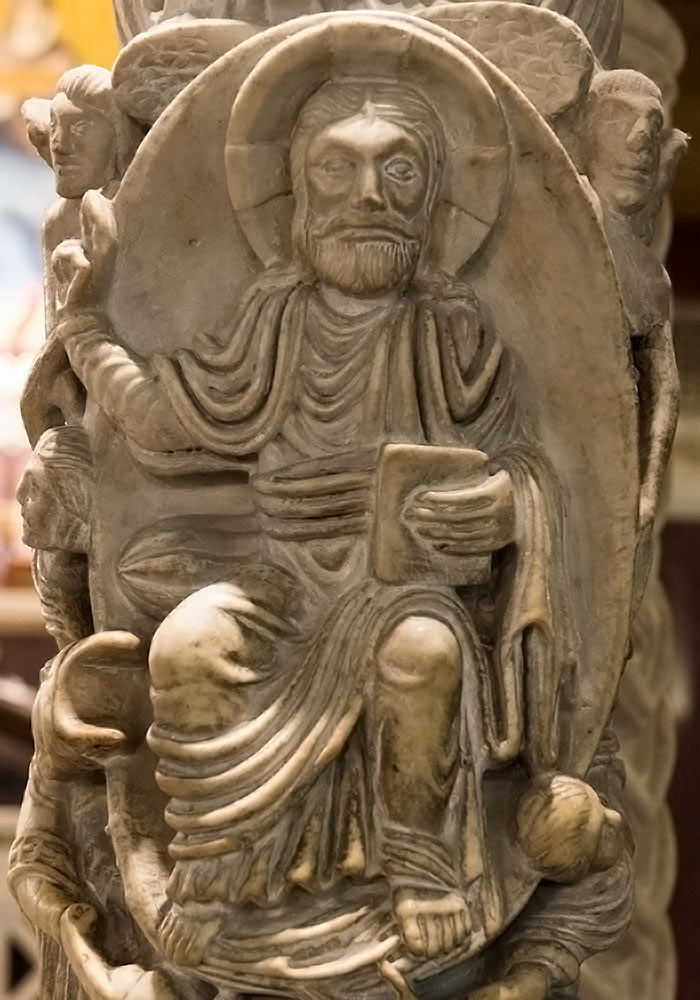
Detail of the interior of Cappella Palatina. The Palatine Chapel is part of the Norman Palace (Palazzo dei Normanni)
See more photos of the Palatine Chapel here!
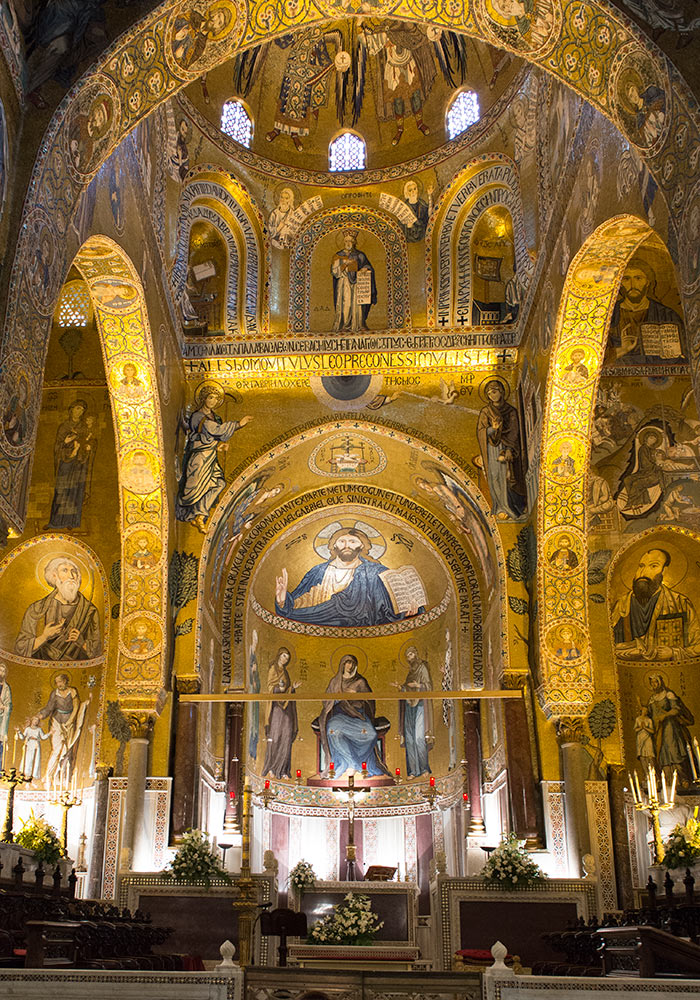
The Palatine Chapel, a masterpiece of Arab-Norman art is the royal chapel of the Norman kings of Kingdom of Sicily situated on the second floor at the center of the Norman Palace in Palermo. The chapel is a great symbol of multi-cultural cooperation. Craftsmen of three different religious traditions worked alongside each other.
Originally there were 50 windows (later blocked) designed to illuminate at all times of the day the stories told on the wall.
The texts in the chapel are written in Greek, Arabic and Latin.
See more photos of the Palatine Chapel here!
Cappella Palatina was initiated by Roger II in 1130 and consecrated a decade later. Renowned for its breathtaking mosaics, the chapel's interior was meticulously designed by Roger II to exalt his monarchy, with particular emphasis on themes related to the Holy Spirit and the theology of light. The central apse features Christ Pantocrator, bearing the message "Ego eimai to phos tou kosmou; Ego Sum Lux Mundi" (I am the light of the world) in Greek and Latin. Notably absent are depictions of the martyrdom and suffering of saints Peter and Paul or the Passion and Crucifixion of Christ; instead, their stories culminate in triumph. The chapel's earliest and most exquisite mosaics, believed to be the work of Byzantine Greeks, adorn its eastern section, enhanced by the use of both gold and silver tesserae.
Norman Monuments in Sicily (selection)
- Castelvetrano
The little 12th Century church of the SS. Trinità di Delia is, according to John Julius Norwich "the perfect fusion of Arab and Byzantine". [Link to the church on Google Maps] - Cefalù Cathedral
"Though much of the inside is now distressingly baroque, the outside is exquisite and the great apse mosaic the most sublime masterpiece Sicily has to offer."
After Norwich's book was written, the "distressingly baroque" elements have been removed. - Forza d'Agrò
The Basilian church SS. Pietro e Paolo is situated a few kilometres outside Forza d'Agrò. The inscription over the west door dates it to 1171-72. The church was built in the 560, then it was destroyed by the Arabs and it was rebuilt in the 1117. The church was restored by the architect Gherardo il Franco in the 1172 because of an earthquake. - Monreale
Cathedral and cloister
Castellaccio (12th Century) on the summit of Monte Caputo - Palermo
The Palatine Chapel (In the Royal Palace, also known as the Norman Palace)
Sala di Ruggero (In the Royal Palace)
S. Maria dell' Ammariglio (the Martorana)
S. Giovanni degli Eremiti
S. Spirito (the church known for the Sicilian Vespers in 1282)
The Royal tombs of Roger II, Henry VI, Constance and Frederick II (in the Palermo Cathedral / Duomo)
Source: John Julius Norwich: The Normans in Sicily: The Magnificent Story of "the other Norman Conquest
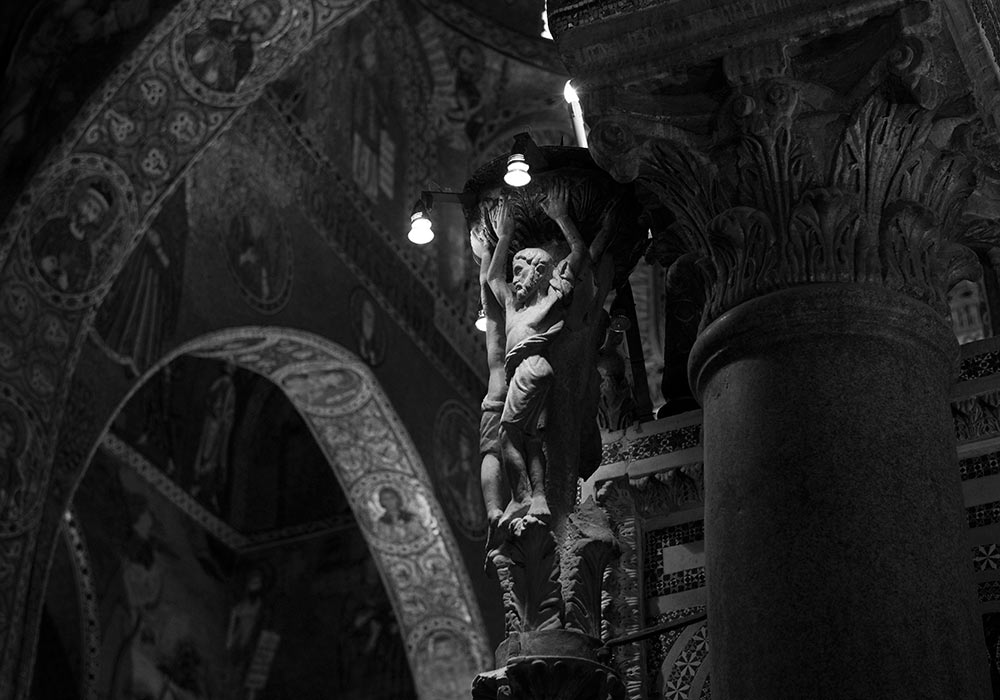
Detail of the Paschal Candelabrum in Cappella Palatina. The Paschal Candelabrum was carved by the "Master of the putti", who also made the capitals of the cloister in Monreale), according to Rodo Santoro.
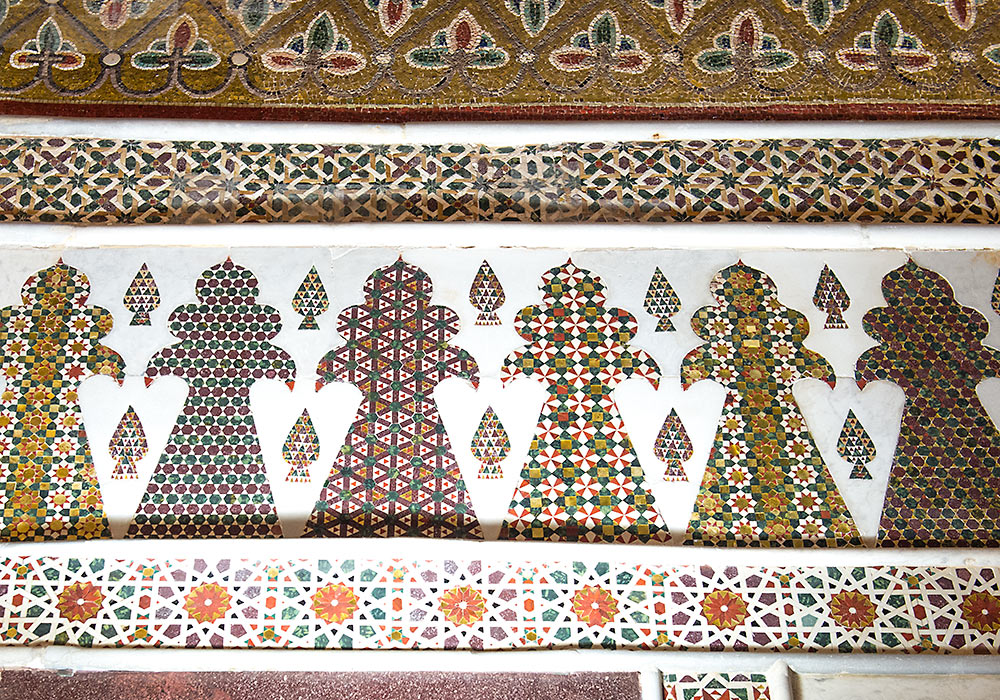
The Palatine Chapel: Detail of the wall.
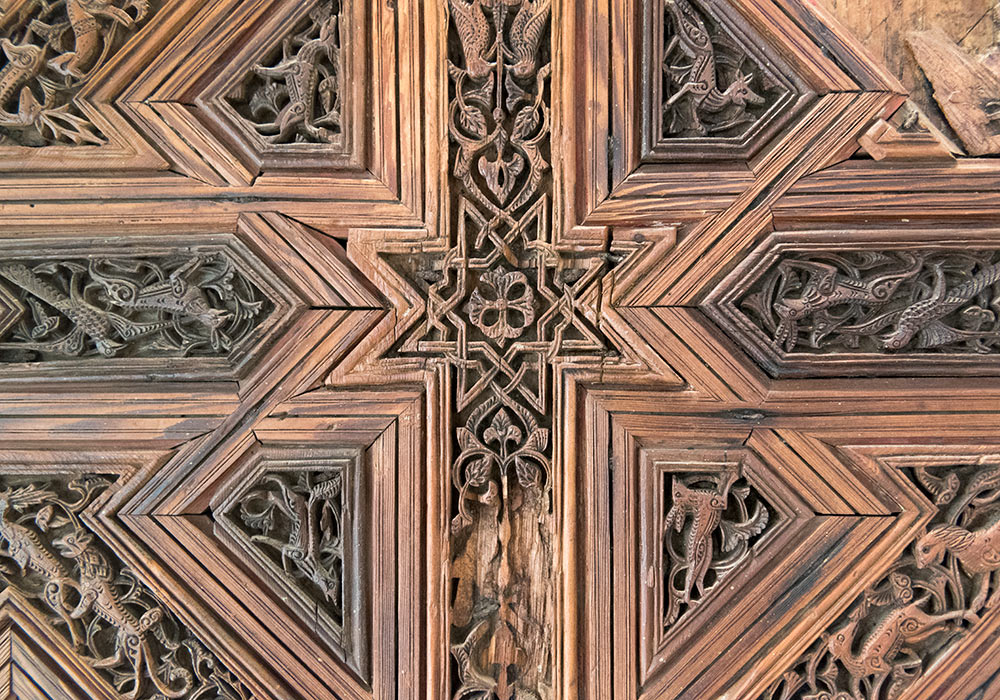
Fragment of the ceiling (12th century) in the Norman Palace.

